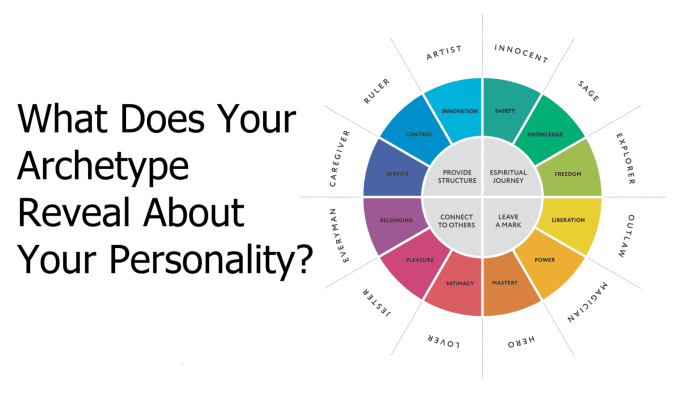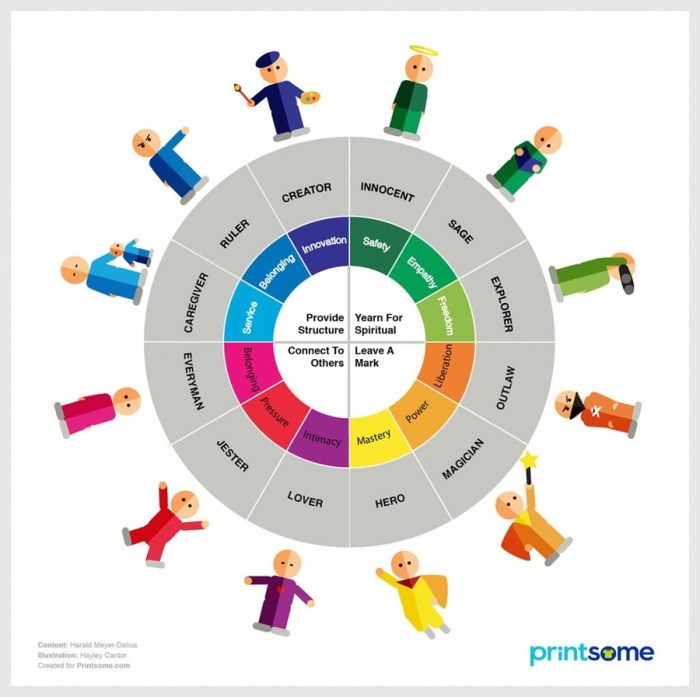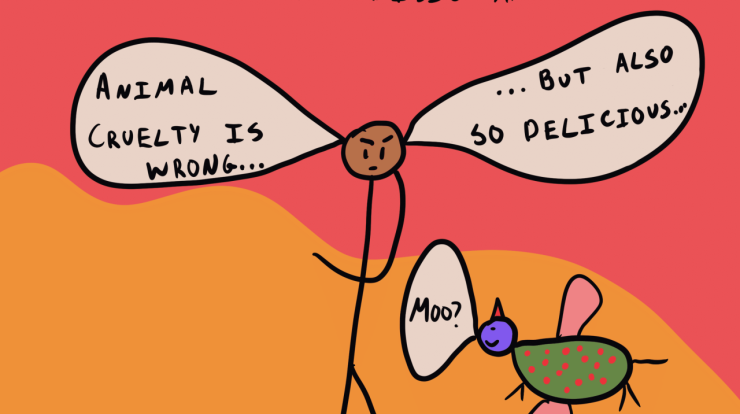An archetype is a ________. With this compelling concept at the helm, we embark on a captivating exploration into the depths of human nature and the collective consciousness that binds us all. Archetypes, like enduring blueprints, shape our experiences, stories, and the very fabric of our cultural tapestry.
From the timeless hero’s journey to the enigmatic shadow archetype, archetypes provide a profound lens through which we can understand ourselves, our societies, and the world around us.
Definition and Explanation

An archetype is a universal symbol or pattern that appears across cultures and throughout history. It represents a fundamental aspect of the human experience, such as the hero, the mother, or the trickster. Archetypes are believed to be innate and shared by all humans, and they play a significant role in shaping our thoughts, feelings, and behaviors.
Role in Human Experiences and Collective Consciousness
Archetypes provide a framework for understanding the world around us. They help us to make sense of our experiences and to connect with others who share similar experiences. Archetypes also influence our collective consciousness, the shared beliefs and values that shape our culture and society.
Types and Examples

Archetypes are recurring patterns, themes, or characters that appear across different cultures, stories, and eras. They embody universal human experiences and serve as a way for us to understand our own motivations, relationships, and place in the world.
There are numerous archetypes, each with its own distinct characteristics and symbolism. Some of the most common include:
The Hero, An archetype is a ________.
- Characteristics: Courageous, strong, determined, self-sacrificing
- Symbolism: Overcoming obstacles, achieving goals, finding redemption
- Examples: Hercules, Odysseus, Luke Skywalker
The Mentor
- Characteristics: Wise, experienced, supportive, protective
- Symbolism: Guidance, wisdom, knowledge
- Examples: Gandalf, Obi-Wan Kenobi, Yoda
The Trickster
- Characteristics: Cunning, mischievous, playful, often disruptive
- Symbolism: Change, adaptability, chaos
- Examples: Loki, Hermes, Bugs Bunny
Jungian Perspective

Carl Jung’s theory of archetypes delves into the concept of a collective unconscious, a shared reservoir of universal symbols, images, and themes present in all human minds. These archetypes transcend individual experiences and cultures, embodying fundamental aspects of human nature and the human psyche.
One prominent archetype in Jung’s theory is the “shadow archetype,” representing the repressed or hidden aspects of the self that are often denied or ignored. The shadow archetype encompasses both positive and negative qualities, reflecting the duality of human nature.
Confronting and integrating the shadow archetype is crucial for personal growth and individuation, as it allows individuals to acknowledge and embrace the totality of their being.
Literary Analysis

Archetypes are a powerful tool in literature, allowing authors to create characters, plots, and themes that resonate with readers on a deep and universal level. By tapping into the collective unconscious, archetypes evoke familiar patterns and symbols that speak to our shared human experiences.
Archetypal characters, such as the hero, the mentor, and the villain, embody universal human traits and motivations. These characters often follow predictable arcs and serve specific functions within a story, creating a sense of familiarity and predictability that allows readers to connect with the narrative.
Plot Archetypes
Archetypal plots, such as the quest, the initiation, and the fall, provide a framework for storytelling that has been used for centuries. These plots explore fundamental human themes, such as the search for meaning, the transition from childhood to adulthood, and the consequences of hubris.
Theme Archetypes
Archetypal themes, such as good versus evil, love and loss, and the search for identity, are universal human concerns that are explored in literature across cultures and time periods. These themes resonate with readers on a deep level, allowing them to connect with the characters and the story on a personal level.
Cultural and Societal Impact

Archetypes profoundly influence the cultural tapestry of societies, shaping norms, values, and beliefs. They serve as collective reservoirs of knowledge, experience, and wisdom, guiding individuals and communities in their interactions and endeavors.Archetypes play a pivotal role in the development of social structures and dynamics.
They provide a framework for understanding roles, relationships, and expectations within a society. For instance, the archetype of the hero embodies qualities of courage, determination, and self-sacrifice, inspiring individuals to strive for excellence and contribute to the greater good. Conversely, the archetype of the villain represents darkness, evil, and destruction, serving as a cautionary tale against negative behaviors and choices.
An archetype is a template or blueprint for a certain kind of character or story. Tupac and My Non-Thug Life is an example of an archetype, as it tells a story about a young man who overcomes adversity to achieve his goals.
The story follows a familiar pattern, but it is told in a unique and personal way. This is what makes the story so powerful and relatable. An archetype is a powerful tool that can be used to create stories that resonate with audiences on a deep level.
Influence on Cultural Norms
Archetypes shape cultural norms by establishing shared expectations and behaviors within a society. The archetype of the mother, for example, often embodies nurturing, caregiving, and selflessness, influencing cultural norms surrounding motherhood and family values. Similarly, the archetype of the wise elder represents knowledge, wisdom, and guidance, shaping cultural norms around respect for authority and the value of tradition.
Influence on Social Interactions
Archetypes influence social interactions by providing individuals with a shared language and understanding of roles and behaviors. The archetype of the leader, for instance, embodies qualities of charisma, vision, and decision-making, guiding individuals in their interactions with those in positions of authority.
Likewise, the archetype of the follower represents loyalty, obedience, and support, shaping social interactions within hierarchical structures.
Influence on Group Dynamics
Archetypes play a crucial role in group dynamics, fostering cohesion and a sense of shared purpose. The archetype of the team player, for example, embodies cooperation, collaboration, and unity, encouraging individuals to work together effectively towards a common goal. Conversely, the archetype of the lone wolf represents independence, self-reliance, and isolation, influencing group dynamics by encouraging individuals to pursue their own agendas.
Modern Applications

In contemporary society and popular culture, archetypes continue to exert a profound influence. They provide a universal language that resonates with people across cultures and generations.
Archetypes are employed extensively in marketing, branding, and storytelling to evoke emotions, establish connections, and convey complex ideas. For instance, the hero archetype is often used to embody strength, courage, and determination, while the villain represents evil, conflict, and opposition.
Marketing and Branding
In marketing, archetypes are leveraged to create compelling brand identities. By embodying specific archetypes, brands can establish clear and recognizable personalities that resonate with their target audience. For example, Apple is often associated with the innovator archetype, emphasizing creativity and cutting-edge technology, while Nike embodies the hero archetype, representing athleticism and achievement.
Storytelling
In storytelling, archetypes provide a foundation for compelling narratives that connect with audiences on an emotional level. Classic fairy tales, movies, and novels often feature archetypal characters and themes that resonate universally. The hero’s journey, for instance, is a common archetype that depicts a character’s growth and transformation through challenges and adversity.
Expert Answers: An Archetype Is A ________.
What is an archetype?
An archetype is a universal pattern or model that exists in the collective unconscious of all humans. It is a recurring theme or image that appears in myths, stories, dreams, and other cultural expressions across different cultures and time periods.
How do archetypes influence our lives?
Archetypes shape our thoughts, feelings, and behaviors by providing us with a framework for understanding the world and our place within it. They influence our values, beliefs, and motivations, and they can be seen in our relationships, careers, and creative pursuits.
What are some examples of archetypes?
Some common archetypes include the hero, the villain, the wise old man, the trickster, the mother, the father, the child, and the anima/animus.
